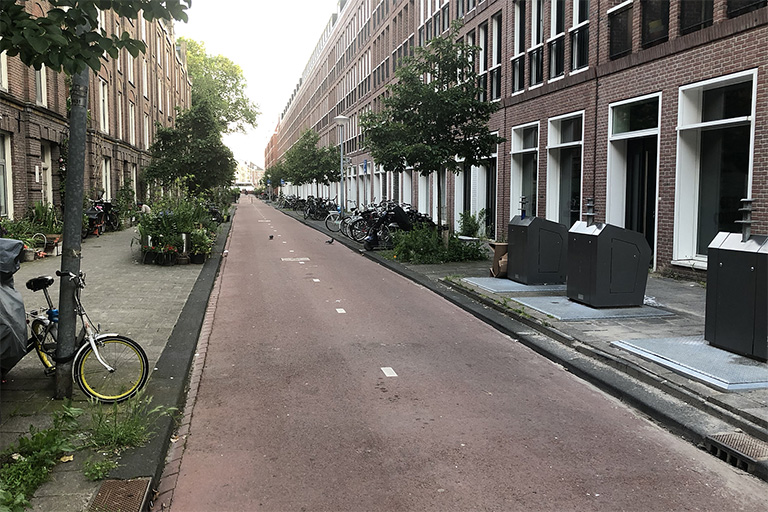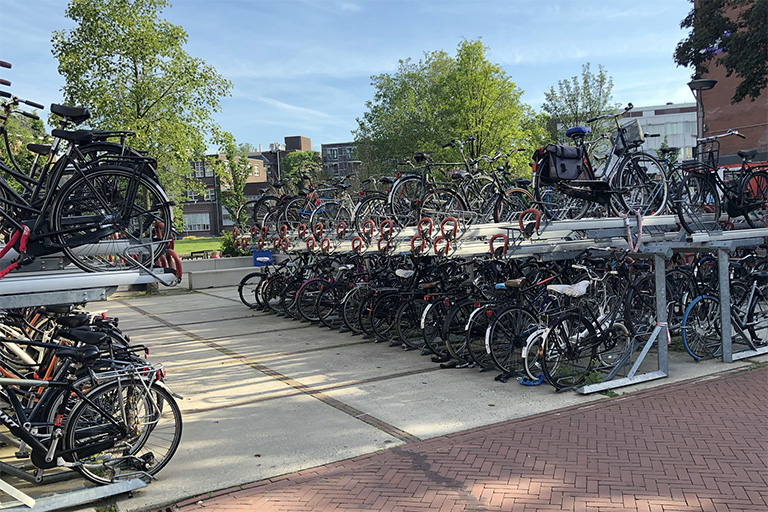
High-quality separated bike paths are everywhere in the Netherlands.
Yi Wen is from Guangzhou, China. He is now a PhD student in civil engineering working with Professor and Associate Department Head of Undergraduate Studies Chris Cherry. Yi’s research explores the multifaceted impacts of emerging transportation modes such as bike share, electric bicycles, and electric kick scooters, and how to reduce reliance on private automobiles through them. Prior to attending UT, he received his master’s degree from University of California, Santa Barbara, and worked at San Francisco Bicycle Coalition and Lime.
Yi wrote this blog post in July 2019 after studying in Amsterdam over the summer.
People from the Netherlands are known for their affinity towards bicycles. By some statistics, about 30 to 60 percent of all the trips are bicycle trips among Dutch cities. Transportation practitioners and researchers across the globe envisioning a sustainable future for their cities are growingly turning to this Dutch secret recipe for help. I am among them, and this summer I was fortunate to have the opportunity to attend the summer course “Planning the Cycling City” offered by University of Amsterdam to learn about this success.
This intensive three-week course explores core themes in cycling that make the Netherlands a country on two-wheels. About 30 people from 20 countries attended this year’s course bringing their unique background and expertise. Together we explored the role of history, culture, education, and infrastructure design in making cycling popular and dominant in the Netherlands with a few site visits. For example, we visited the world’s largest bicycle parking facility in Utrecht that can store around 20,000 bicycles!
The best part I love about this program is that we were required to bike as much as possible in the city. This gives me the privilege to experience what a cycling is like on a bike, also thanks to the expansive and separated bicycle network in Amsterdam. On average, every person in the class biked about 200 miles in three weeks on the world-class biking infrastructure. Because of this, an organization donated two bikes to a bicycle education center in Amsterdam on our behalf.

The double-decker bike parking facility on University of Amsterdam campus.
To me, this experience has been more than rewarding, not only because the credits of the course can be transferred back to UT, but also because the opportunity to interact with active researchers in cycling in the Netherlands. It provides me with a new social perspective to understand and examine the current transportation issues we have both in the US and in China, which have traditionally been an engineering-oriented focus. Plus, the city of Amsterdam itself has so much to offer. Being in the heart of Europe makes it a lot easier to travel to other European countries. For example, during my spare time, I visited Sweden, Denmark, Spain, and France.
Now, I am more motivated than ever to share with everyone what I’ve learned from the success of Dutch cycling: There is no universal recipe for the success of cycling in the Netherlands. However, Amsterdam and other Dutch cities do provide a great testimony that a cycling city can be made if the city itself is designed for humans and children.

Yi Wen, right, celebrates “graduation” from the class with his teammates.